
Click over Logo to Home Page
March 2014 Hot
News
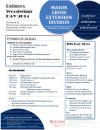




30 March 2014
Rutgers University Woodwind Day - VIP Dr
Maureen Hurd-Hause, Director with Performance and Master Classes
with Woodwind Faculty
New Brunswick, New Jersey USA
Information coming soon








29 March 2014
University
of Maryland Clarinet Day - VIP
Robert
DiLutis, Director - at
Perry Hall High School near Baltimore, Maryland
Perry Hall, Maryland USA
Information coming soon


29 March 2014
Troy
University (Alabama) Clarinet Day - VIP
Timothy Phillips, Director,
with VIP
Jon Manasse
and several others as Faculty
Troy, Alabama USA
By Jennifer Tinberg
Troy University held its seventh annual Clarinet Day on
March 29th, 2014.
Under the direction of Dr. Timothy Phillips, students
from Alabama, Georgia, and Florida experienced an event full of guest artist
performances, master classes, and clarinet choirs.
Clarinetists joining Dr. Phillips included Bil Jackson
(Vanderbilt), Jon Manasse (Eastman,
Juilliard), Katrina Phillips (Alabama State), Wonkak Kim (Tennessee Tech),
Patricia Crispino (Troy),
and Jennifer Tinberg (Troy).
Pianists for the recitals were Susan Grace (Colorado
College) and Eun-Hye Grace Choi (Tennessee Tech).
The day began with a morning artist and faculty recital,
which was well-attended by participants and parents.
Dr. Phillips opened the recital with a performance of
the solo clarinet work
Parfums d’orient by Jérôme Naulais.
Dr. Katrina Phillips followed with the fourth movement
of Muczynski’s Time
Pieces. Third on the program was Luigi Bassi’s E-flat and
B-flat clarinet duo based on the opera
La Sonnambula,
performed by Jennifer Tinberg and Patricia Crispino. To close the recital,
Wonkak Kim played
Introduction et Rondo by Charles-Marie Widor.
Clarinetists featured on this recital were fortunate to
collaborate with pianist Eun-Hye Choi, who played on all but the opening piece.
Following the recital, participants entered the new,
spacious band rehearsal hall for a clarinet choir rehearsal.
Over 90 students made up the ensemble, which rehearsed
under the direction of Dr. Timothy Phillips and Troy University Director of
Bands, Dr. Mark Walker.
On breaks, students had the opportunity to try clarinets
and equipment offered by Capitol Music of Montgomery, Alabama, Rodriguez Musical
Services of Atlanta, Georgia, and the Buffet Group USA of Jacksonville, Florida,
which included products by Clarinet Day sponsors Buffet, Vandoren, Rico, and
Yamaha.
Guest artists Bil Jackson and Jon Manasse each gave a
recital in the middle of the day, demonstrating a variety of standard clarinet
repertoire and their command of different styles.
Pianist Susan Grace gave an exceptional collaborative
and musical performance in both recitals.
Bil Jackson performed Leonard Bernstein’s
Sonata and
Weber’s Fantasia and
Rondo. Jon
Manasse began
with the Poulenc Sonata and then played two movements of
Four Rags for Two Jons by John Novacek.
The set of recitals was closed with these three dynamic
performers playing Mendelssohn’s
Concertpiece No. 1.
After another meeting of the clarinet choir,
participants attended master classes by both Bil Jackson and Jon Manasse.
Troy sophomore Marissa Stanfill received coaching from
Mr. Jackson on her memorized performance of Debussy’s
Premiere Rhapsody.
Ana Locke, a Troy junior, worked with Jon Manasse on the
exposition of Spohr’s first
Clarinet Concerto.
The classes were engaging and educational for both
performers and audience; there was a great balance between discussion of
musicality and clarinet technique.
The final concert was a
fantastic representation of the Troy University Clarinet Day experience.
Parents and community members heard performances by high
school ensembles, college ensembles, and guest artists.
The Troy University Clarinet Choir opened the concert,
followed by the Bay High School Clarinet Choir.
Next, the Clarinet Day Faculty Quartet (Wonkak Kim,
Katrina Phillips, Jennifer Tinberg, and Patricia Crispino) performed two
movements of a quartet by Mari Miura.
Bil Jackson and Jon Manasse concluded the first half
with a well-received jazz duet.
The Clarinet Day Choir ended the concert with pieces by
Weber, the Beatles, and Sousa.
Clarinet Day 2014 was a successful and enjoyable event
for everyone involved.
The history of great guest artists, performances, and
masterclasses was continued, and promises a great experience for all
participants at future Troy University Clarinet Day events.





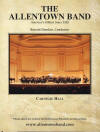
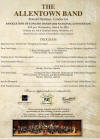
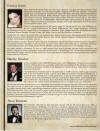
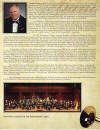
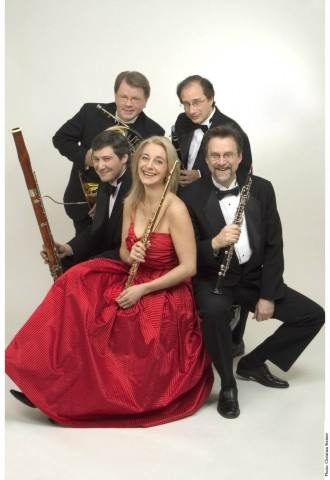
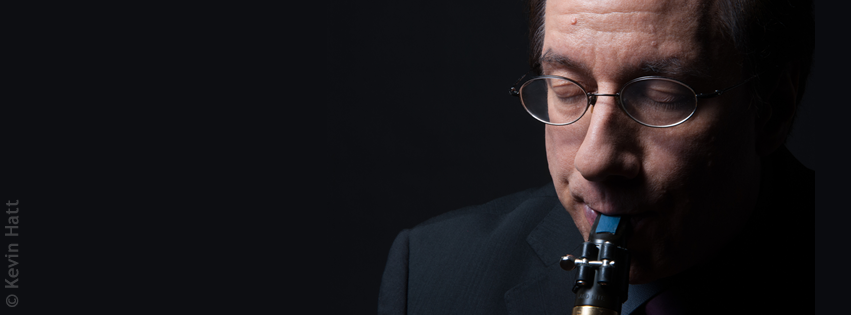
March 19, 2014
New York Woodwind Quintet Performs the World Premiere of Charles Neidich’s "And Then There Were…"; the New York Premiere of Steinmetz’s "Three Pieces" for Ten Winds; and Works by Fine and Mendelssohn (arr. Purvis)
Part of Juilliard’s Daniel Saidenberg Faculty Recital SeriesNew York City USA
The New York Woodwind Quintet (Carol Wincenc, flute; Stephen Taylor, oboe; Charles Neidich, clarinet; Marc Goldberg, bassoon; William Purvis, French horn) perform the world premiere of Charles Neidich’s And Then There Were…(2014); the New York premiere of John Steinmetz’s Three Pieces for ten winds (2013); Irving Fine’s Partita for Wind Quintet; and Mendelssohn’s (arr. Purvis) Quartet in A Minor, Op. 13, No. 2
The New York Woodwind Quintet (Carol Wincenc, flute; Stephen Taylor, oboe; Charles Neidich, clarinet; Marc Goldberg, bassoon; William Purvis, French horn) perform the world premiere of Charles Neidich’s And Then There Were…(2014); the New York premiere of John Steinmetz’s Three Pieces for ten winds (2013); Irving Fine’s Partita for Wind Quintet; and Mendelssohn’s (arr. Purvis) Quartet in A Minor, Op. 13, No. 2 on their Daniel Saidenberg Faculty Recital on Wednesday, March 19, 2014 at 8 PM in Juilliard’s Paul Hall. Irving Fine’s Partita for wind quintet, in five movements, was completed in 1948 and had its premiere by the New Art Wind Quintet in New York City. The work won the New York Music Critic’s Circle Award that year. Irving Fine studied composition at Harvard with Walter Piston and with Nadia Boulanger. He also studied conducting and composing with Serge Koussevitzky. Fine taught at Harvard from 1939 until 1950 and at the Berkshire Music Center at Tanglewood. He was the Walter Naumburg Professor of Music and founder and chairman of the School of Creative Arts at Brandeis University. Among his many honors and fellowships were a Fulbright, a Guggenheim, and an award from the National Institute of the Arts.
John Steinmetz’s Three Pieces for Ten Winds (2013) has its New York premiere on this program. The work was written for the NYWQ and Consortium. Steinmetz writes this note about the work: “Three Pieces lasts about 17 minutes. The second movement runs directly into the third. There’s no story or program, but I had lots of different things in mind: sounds, moods, energy patterns, and especially visionaries’ experiences of spaciousness, of feeling part of a vast pattern, of connectedness with everybody and everything.” The three movements are: 1. What the Birds Said; 2. Visions; and 3. Dance. The work was commissioned by a consortium of ensembles, organizations, and individuals. Bassoonist and composer John Steinmetz is a native of Fresno, California and moved to Southern California to attend the California Institute of the Arts. He teaches bassoon at UCLA and serves on the board of Renaissance Arts Academy, a public school offering intensive arts training regardless of background or experience. He frequently writes for various publications, including Chamber Music magazine.
Charles Neidich’s world premiere work, And Then There Were…(2014) is his third woodwind quintet, the previous two also written for the New York Woodwind Quintet. The first, Sound and Fury, was composed in 2001 in memory of two NYWQ colleagues, flutist Samuel Baron and oboist Ronald Roseman. His second quintet, La Mano Sinistra, was written in 2008 and revised in 2009. He writes: “In the present quintet as in my past two, I have endeavored to break the traditional limitations of the woodwind quintet. Of course, writing for my colleagues in the New York Woodwind Quintet, each a virtuoso and instrumental pathbreaker and collectively the leading wind chamber musicians in the United States today, has allowed me the freedom to write for extreme virtuosity and extreme drama. It is based on a five note chord – Bb, B-natural, C, C-sharp, E and its inversion creating an eight-note chord: B-flat, B-natural, C, C-sharp, E, F, F-sharp, G, and is in five interconnected sections and like many of my works will incorporate changes of lighting and theatrical elements.” Charles Neidich regularly appears as soloist and collaborator in chamber music programs with leading ensembles including the Saint Louis Symphony, Minneapolis Symphony, Orpheus Chamber Orchestra, I Musici de Montréal, Tafelmusik, Handel and Haydn Society, Royal Philharmonic, Deutsches Philharmonic, MDR Symphony, Yomiuri Symphony, National Symphony of Taiwan and the Juilliard, Guarneri, Brentano, American, Mendelssohn, Carmina, Colorado, and Cavani string quartets. He has performed throughout Europe, Asia, and the United States, and is a sought-after participant at many summer festivals. Mr. Neidich is on the faculties of Juilliard, Queens College of the City University of New York, Manhattan School of Music, and Mannes College and has held visiting positions at the Sibelius Academy in Finland, at Yale, and Michigan State University. Last spring, he was the recipient of the William Schuman Award given by Juilliard for outstanding performance and scholarship.
Mendelssohn wrote his String Quartet No. 2 in A Minor, Op. 13 in 1827 when he was 18. The work was arranged by New York Woodwind Quintet member, William Purvis.
About the New York Woodwind Quintet
Now in its seventh decade, the New York Woodwind Quintet has maintained an active performance schedule in the United States and abroad while also teaching the next generation of woodwind performers. The Quintet has commissioned and premiered more than 20 compositions, some of which have become classics of the woodwind repertoire. They include quintets by William Bergsma, Jon Deak, Ezra Laderman, Evis Sammoutis, Gunther Schuller, William Sydeman, Wallingford Riegger, Alec Wilder, and Yehudi Wyner. The Quintet has featured many of these in recordings for such labels as Boston Skyline, Bridge, New World Records, and Nonesuch, and released Schoenberg’s Wind Quintet on the Naxos label. Elliott Carter’s work, Nine by Five, was commissioned by Juilliard for the New York Woodwind Quintet in honor of the 25th anniversary of Joseph W. Polisi’s tenure as president of the School. The work remains a staple in the woodwind quintet repertory, as does Carter’s 1948 woodwind quintet.
The Quintet’s members also honor the legacy of departed members, including the late Samuel Baron, by continuing to perform his transcriptions of works such as Bach’s Art of the Fugue and the Scherzo from Mendelssohn’s A Midsummer Night’s Dream, and the late Ronald Roseman, by performing his Wind Quintet No. 2 and Sextet for Piano and Winds which was dedicated to the New York Woodwind Quintet and completed just before he died. Continuing that tradition, the group regularly performs numerous transcriptions by William Purvis and several compositions of Charles Neidich. Current NYWQ members are flutist Carol Wincenc, oboist Stephen Taylor, clarinetist Charles Neidich, bassoonist Marc Goldberg, and French hornist William Purvis. The New York Woodwind Quintet has been an ensemble-in-residence of Juilliard since 1989 where they teach individually, as well as coach and administer the woodwind chamber music seminar and program.








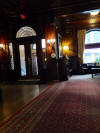
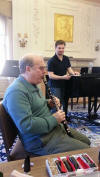
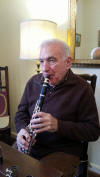
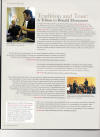
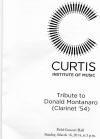

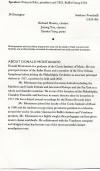
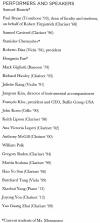










16 March 2014
Distinguished
Clarinet Faculty
Donald Montanaro to Retire;
Tribute Concert March 16 -
Students and colleagues pay tribute to a
distinguished teaching career spanning more than
30 years at Curtis Institute
Philadelphia, Pennsylvania USA
After more than
three decades on the Curtis faculty,
Donald Montanaro will retire at the
close of the 2013-14 school year. A member of
the Philadelphia Orchestra from 1957 to 2005 and
a Curtis faculty member since 1980, his students
can be found around the world, occupying
important positions in Beijing, Dallas, Fort
Worth, Los Angeles, Malmö, Mexico City, New
York, Philadelphia, Pittsburgh, San Francisco,
Seoul, and Toronto; as well as the Metropolitan
Opera Orchestra.
Donald Montanaro had Philadelphia's great teachers
including Jules Serpentini, Joseph and Anthony Gigliotti,
and was influenced by the great playing of Ralph Maclain. He stands as a
true steward of the Philadelphia Sound tradition as mentioned in this article.
His former students and colleagues gather at
Curtis on
Sunday, March 16 at 3 p.m.
for a tribute concert in Field Concert Hall,
1726 Locust Street. The concert is free and open
to the public, and no ticket is required.
Performers include Anthony McGill ('00), Yao
Guang Zhai ('09), Han-Yo Son ('06), Keith Lipson
('98), Victoria Luperi ('02), Gregory Raden
('94), Richard Hawley ('93), and Juyong You
('13), with remarks from Mark Gigliotti (Bassoon
'79), Sam Caviezel ('96), and Francois Kloc,
President and CEO of Buffet Group USA.
As a clarinet student at Curtis, Mr. Montanaro
inherited a musical legacy from the school's
first clarinet teacher, Daniel Bonade, and the
first oboe and woodwind chamber music teacher,
Marcel Tabuteau. After joining the faculty
himself, he drew upon them to create a unique
emphasis on sound quality and singing style.
Curtis woodwind students have been inspired by
his knowledge of the quintet repertoire and love
of the medium for 34 years. A passionate
collaborative musician, Mr. Montanaro is the
music director of the Philadelphia Chamber
Ensemble, a group he founded in 1977.
"Mr. Montanaro is the embodiment of the great
Philadelphia tradition of wind playing going
back to Marcel Tabuteau," said Gregory Raden,
principal clarinet of the Dallas Symphony
Orchestra. "Through his unparalleled attention
to detail, his teaching instilled in me the
lifelong pursuit for elegance, refinement, and
vocal expression."
During this tribute
concert, many former students gave accalaides and reflections on his teaching
and personal influence on them, as well as letters of testimony from former
students who could not come to this event. Great past students including
Gregory Raden, Richie Hawley, had comments of praise and as Mr Hawley put it, to
carry on the torch to continue the teaching legacy that Montanaro has made on so
many students.
This was a historic day for all concerned and for the Curtis
Institute.






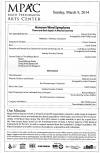

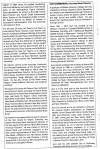
9 March 2014
Hanover
Wind Symphony - Special guest Soloist: Senior VIP
Stanley Drucker - Legendary Solo Clarinetist in the
New York Philharmonic
for 61 Years
Morristown, New Jersey USA
Complete Information about
this concert hyperlinked on the Hanover Wind Symphony link above
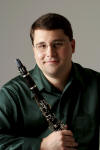

8 March 2014
Fort Lewis College Clarinet Day with VIP Dr Timothy Phillips
Events included a recital performance and master class by Dr. Phillips, potpourri recital, and clarinet choir reading session -
A Report by Dr. Joshua R. Mietz and Martha McCabe
Durango, Colorado USA
Fort Lewis College in Durango, Colorado is pleased to announce the successful
completion of its first Clarinet Day, which was held on March 8th,
2014. The event was sponsored in part by the Artist in Residence Program and
hosted by Dr. Joshua R. Mietz. Activities included a master-class, guest artist
recital and clarinet choir reading session. Dr. Timothy Phillips, Associate
Professor of Clarinet at Troy University, travelled to the American Southwest to
work with students from across the Four Corners Region. He provided a sound
pedagogical approach and included a discussion about overcoming performance
anxiety. His methods were applicable to a wide-range of pursuits, and it was a
delightful learning experience for everyone involved.
Participants later assembled for a clarinet choir reading session, exploring
works such as those by Dr. Joshua R. Mietz and David Maslanka. The festival was
concluded with a stunning recital given by Timothy Phillips. He performed
Parfums D’Orient by Jérôme Naulais, Schumann’s Romanzen, Op. 94, Il
Carnevale di Venezia by Béla Kovács, Mendelssohn Concert Piece No. 2
with pianist Dr. Lisa Campi-Walters and Dr. Mietz, and Traci Mendel’s
Landscapes: Series IV with accompanying video. The work by Mendel is
not widely known but merits attention. The solo clarinet is heard while a
series of landscape photographs of the Appalachian mountain region, including
sunrises, sunsets, and a roaring river, are projected behind the performer on a
screen.In addition to the Artist in Residence Program at Fort Lewis College,
this event was made possible by the gracious sponsorship of Vandoren Reeds,
Buffet-Crampon, Katzin Music, and Behn Mouthpieces. For more information about
the Fort Lewis College Clarinet Studio or future Clarinet Days, please contact
Dr. Mietz, email:
jrmietz@fortlewis.edu
or http://www.fortlewis.edu/music/JoshuaMietz,Clarinet.aspx
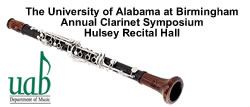


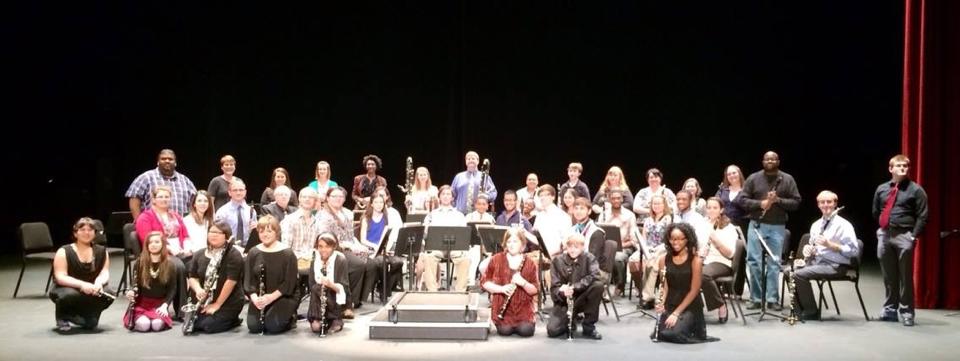



















1 - 2 March 2014
University of Alabama
UAB 12th Annual Clarinet Symposium
- Dr Denise Gainey, Director
Birmingham, Alabama USA
Clarinetists of all ages gathered in Birmingham for the 12th Annual UAB Clarinet
Symposium. It was an exciting weekend of workshops, master classes, clarinet
choirs, featured vendors with instruments, mouthpieces, barrels, reeds, music,
etc.. and recitals and clinics by some of the nation's finest clarinetists.
Featured Special Guest Artists Dr. Denise Gainey (University of Alabama at
Birmingham), Dr. Diane Barger (University of Nebraska-Lincoln), Dr. Michael
Rowlett (University of Mississippi), Prof. London Silas Shavers (Northwest
Mississippi Community College), Dr. Lynn Musco (Stetson University), Dr. Shawn
Copeland (Highpoint University) The Tosca Duo The Atlanta Clarinet Ensemble
Art's Music Shop, Madison Band Supply (representing Backun Musical Services),
and Rodriguez Musical Services were the
The two days included intensive Master Classes given by the guest faculty,
Clarinet Choir rehearsals and a concert finale conducted by Mr Shavers, and much
social interaction between students, faculty, and exhibitors. This annual
event provides a major boost for aspiring clarinetists to reach towards their
next level of playing, and credit is certainly due to all handling this program,
especially Dr Gainey, guest faculty, her Clarinet students who assisted in the
logistics, and those who came and participated.



Director VIP Dr
Mary Alice Druhan in concert with Steve Cohen


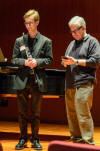



VIP Steve Cohen
in Recital and Master Classes










Clarinet
Ensembles and Clarinet Choir conducted by Dr Druhan

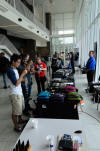






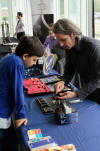

Exhibits from Instrument makers and
accessories
1 March 2014
Texas Clarinet Colloquium
- VIP Dr
Mary Alice Druhan,
Director -
Texas A & M University
Commerce, Texas USA
New
Information coming soon





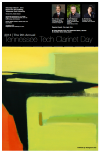
1 March 2014
Tennessee Tech Clarinet
Day - VIP Wonkak Kim, Director
New
Information coming soon
Copyright © 1999 WKA-Clarinet.org. All rights reserved.
Revised: May 14, 2014

















































































